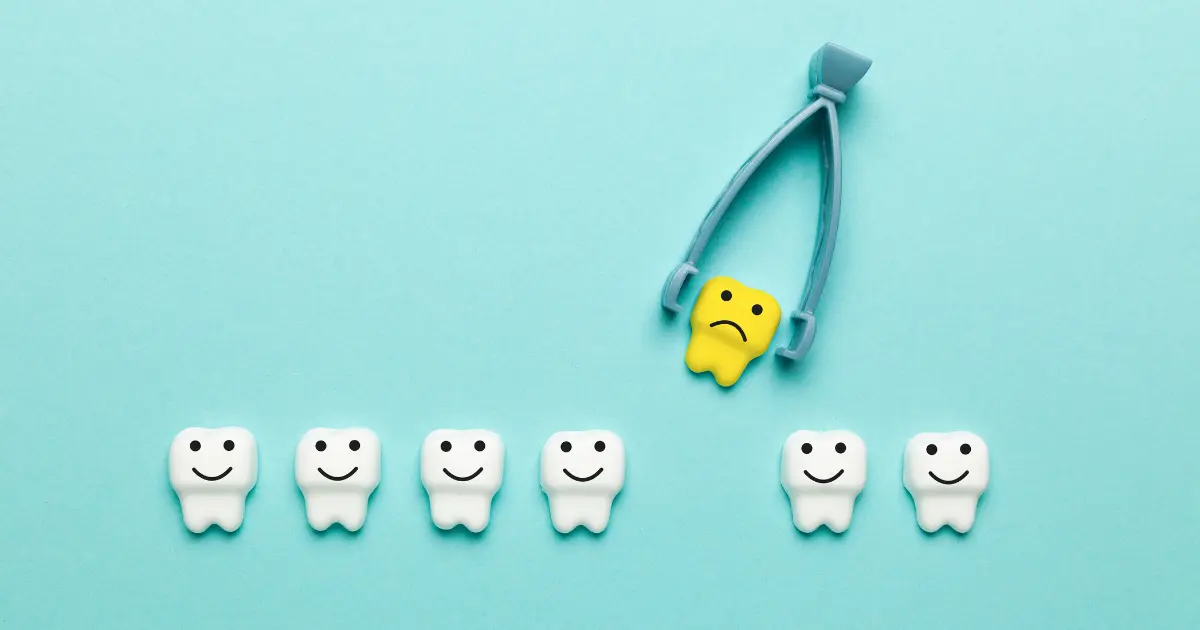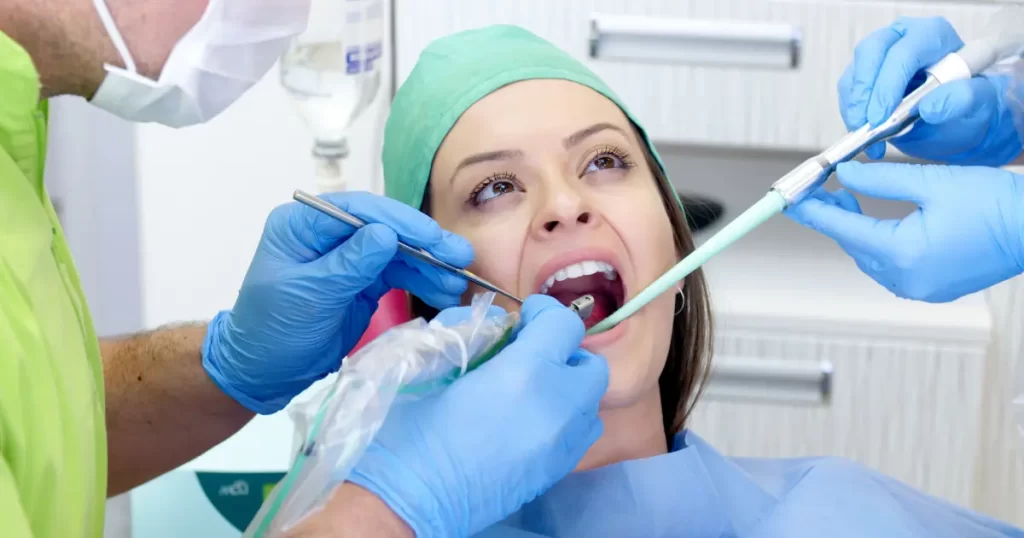A tooth extraction may be advises by a dentist. for some reasons: impaction, dental decay, periodontal and gum disease, trauma, and overcrowding. Some of these disorders, like tooth decay and some gum illnesses, may be avoid. It can be happen with preventative treatment. The tooth is vulnerable to infection, resulting in gums. Gums problems like red, swollen, sensitive, or bleed. This illness characterizes by discomfort and swelling around the jaw. As well as difficulties opening the mouth.
Reasons For Tooth Extraction

For protect the surrounding teeth, it may be must to remove the tooth. It in favor of a dental bridge or dental crown if the bone or gum around the tooth deteriorates too much. Accidents may wreak havoc on teeth. Whether they involve a fast-moving wayward baseball or an automobile collision.
Sometimes, an injury can cause a tooth to become irreparable. When this occurs, tooth extraction is a crucial component of the healing process. Otherwise, a broken tooth might get serious infected. At least need a painful operation such as a root canal. These are several causes for tooth extraction. These are:
- Overcrowding
- Tooth Decay
- Gum Disease
- Trauma
How Is Tooth Extraction Performed?

The treatment will occur in a dentist’s office or hospital’s dental clinic. It may need the extraction of one or more teeth. You could be instruct to take antibiotics before the surgery. A local anesthetic will use to numb the region surrounding the tooth so that you do not feel any discomfort. Your dentist may use an elevator to dislodge the tooth from the gum using a dental tool.
Your dentist will next grasp the tooth with forceps and extract it from the gum. You may be give sedation and an anesthetic. So that you are comfortable and sleeping, and pain-free, one by one. Using the foregoing techniques, the surgeon may need to extract many teeth.
The surgeon may have to cut a flap of gum tissue and remove surrounding bone to extract an affected tooth. The tooth will be extract with forceps. If the tooth is difficult to extract, it may be section (broken) into pieces.
Due to the possibility of a cavity, teeth that are hard shattered or damaged may need more sophisticated procedures. If left untreated, a big hollow can cause fractures and breaks. And it becomes more than enough painful. Plus, tooth decay can lead to infections along the exposed gum line and pulp. (like root canal, nerves, and connective tissue). In such instances, root canal therapy may be must. Cracks and fractures can also expose the teeth’s nerve endings. It rendering them sensitive to hot and cold temperatures.
What Are the Risks of Tooth Extraction?

Tooth extraction relates to several common postoperative consequences. These risks are including:
- discomfort
- swelling
- bruising
- bleeding
- infection
Most patients may have localized discomfort, swelling, and bruising. Which is will reduce with time. In the meanwhile, anti-inflammatory and analgesic drugs can help control these symptoms. Continued bleeding and infection of the region are uncommon. But may need more treatment, such as medication for an infection, if they occur.
Following tooth extraction, the remaining teeth may shift. It results in misalignment and alterations to the bite. This may later cause damage to the remaining healthy teeth in the mouth, necessitating more dental repair. This may be avoid by employing measures to compensate for the lost tooth. For instance, the remaining teeth can reposition orthodontically. Or the extracted tooth can replace with a dental implant, bridge, or denture.
What You Should Not Do After a Tooth Extraction?

Tobacco’s compounds can inhibit blood coagulation. It increases the risk of having dry socket following tooth extraction. After an extraction, you should abstain from smoking for at least 48 hours. Straws should be avoid. Because their sucking motion might dislodge blood clots, increasing the risk of bleeding and dry socket. Straws should be avoid for at least 48 hours.
Please do not spit. Even though increased saliva and blood are typical following tooth extraction. It spits may seem like a simple remedy. Spitting exerts pressure on the mouth and might interfere with blood coagulation. Instead, bend over the sink and allow blood and saliva to flow. Do not rinse your mouth. While you may be tempt to rinse or gargle to clean your mouth. It refrains from doing so for the first 48 hours, as it might hinder or even disrupt the clotting process.
Avoid nose blowing and sneezing. This is especially true if your top teeth have remove. The pressure associated with sneezing and blowing your nose might dislodge the clot. If a sneeze is unavoidable, keep your mouth open to prevent more pressure. Avoid exploring the region of the extraction with your tongue. Although it may seem strange to have an empty area where a tooth before was, keep your tongue away from it. This can dislodge a clot and raise the risk of developing a dry socket.
What Are the Options for Replacing the Extracted Tooth?

Those in need of tooth replacement following a tooth extraction other opt for dental implants. Because putting a dental implant in a patient’s mouth entails oral surgery. Patients must first be clear for the procedure. The full implant placement procedure demands patience because it takes months to complete.
Dental bridge is the most popular term for a fixed bridge. This approach for tooth replacement anent putting dental crowns on the teeth. And then inserting one or two fake teeth between these crowns.
A removable partial denture is a dental appliance that utilizes one or more fake teeth to replace any removed teeth in a patient’s mouth. Patients can pick from a variety of materials, such as acrylic resin, porcelain, and/or metal. This approach for tooth replacement utilizes clasps that attach to the remaining teeth. So that the prosthetic teeth remain secure in place. Since removable partial dentures are significant easier to maintain. They are a popular option for tooth replacement.






